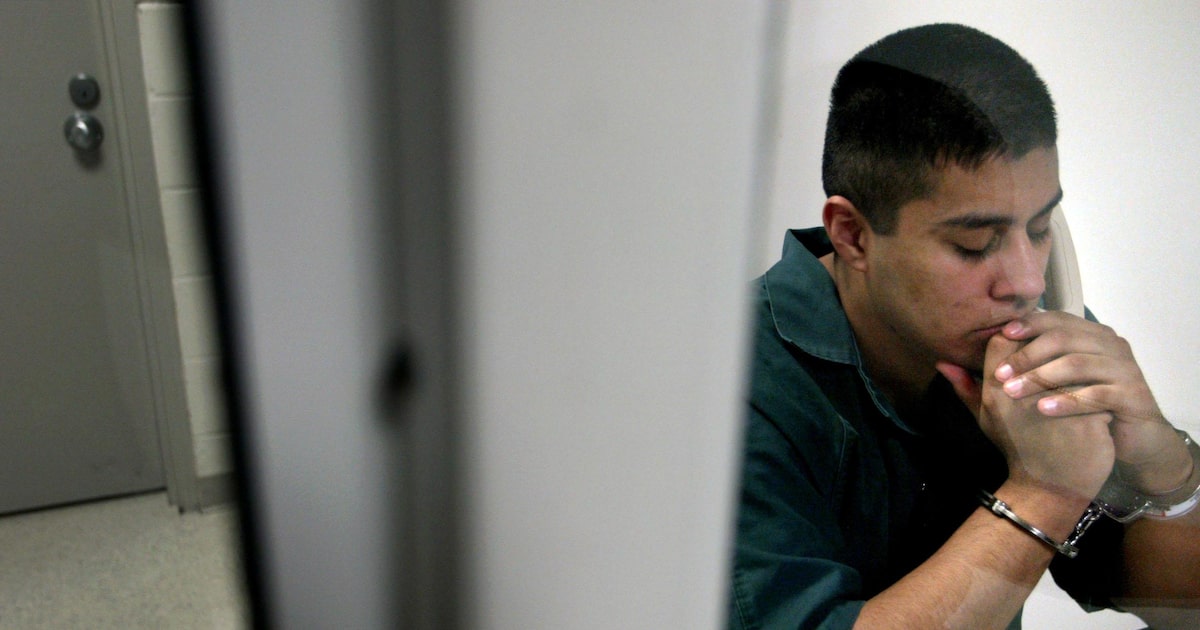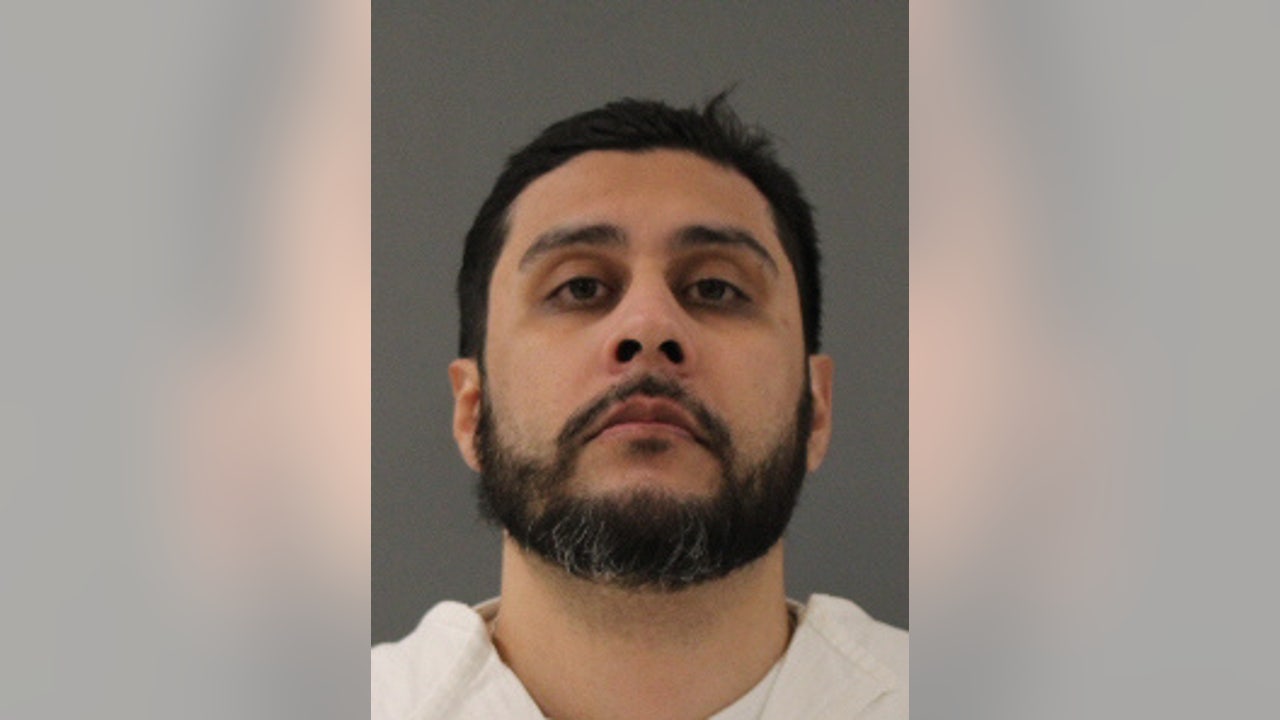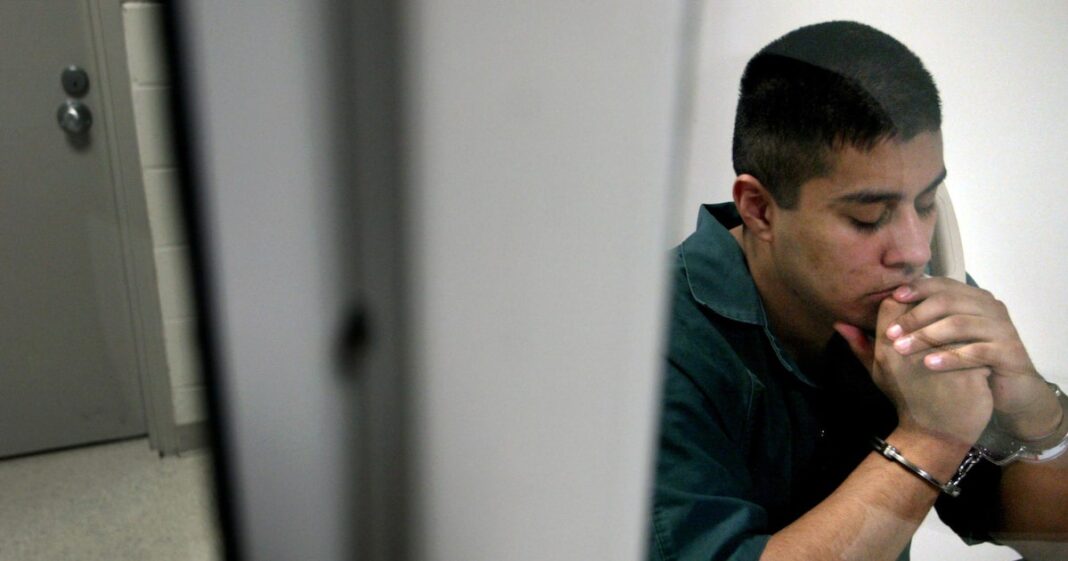A Grim Sense of Closure: Collin County Man Faces Justice for Tragic Murder In a somber turn of events, a Collin County man has been executed for the heinous crime of taking the life of a young mother, leaving behind a trail of grief and heartache. The Dallas News reports that this long-awaited outcome serves as a poignant reminder of the gravity of such crimes and the unwavering commitment to justice. As details of the case come to light, it’s clear that the relentless pursuit of truth and accountability has finally yielded the closure that the victim’s family and loved ones so desperately sought. In this article, we’ll examine the events that led up to this pivotal moment and the emotional aftermath that has unfolded.
The Death of Moises Mendoza: A Long-Awaited Justice
The Crime and Confessions

On March 18, 2004, Rachelle O’Neil Tolleson, a 20-year-old new mother, was reported missing after her 5-month-old daughter, Avery, was found alone in Tolleson’s Farmersville home. The bedroom was in disarray, with broken furniture, clothes, and papers strewn about, reminiscent of the aftermath of a tornado.
Moises Mendoza, then 20, was brought in for questioning when it was revealed that days before Tolleson’s disappearance, the two were seen talking at a house party. Tolleson, who was in the midst of a divorce, later told a friend she had no interest in Mendoza.
After days of searching, a man combing the bed of a Collin County creek for arrowheads on March 23 discovered Tolleson’s burned body. She was identified by her dental records. Mendoza was arrested the next day, after a friend told police he had confided in her about his role in the killing.
In a letter he wrote to his parents, Mendoza said he “turned into the devil” when he committed the crime, according to court records. Mendoza told investigators he did not kidnap Tolleson, but that she willingly left Avery to sit with him in his pickup, where he choked her “for no reason.” He said they then had sex before he choked her again and “poked her throat” with a knife to ensure she was dead.
Mendoza’s Confessions

Mendoza repeatedly confessed to the murder, including the circumstances surrounding his initial confession. His confessions provided crucial evidence linking him to the crime.
The Investigation

The investigation gathered substantial evidence, including the testimony of witnesses and physical evidence linking Mendoza to the crime. The crime scene was thoroughly examined, and forensic evidence was collected, further solidifying the case against Mendoza.
The Trial and Appeals
The Conviction and Sentence

In 2005, Mendoza was convicted and sentenced to death by a Collin County jury for kidnapping, strangling, and sexually assaulting Tolleson. The trial presented key witnesses and evidence, including Mendoza’s confessions, which sealed his fate.
The Appeals Process
Mendoza’s attorneys filed multiple appeals, largely alleging ineffective counsel at his 2005 trial. These appeals were rejected by the courts, with the U.S. Supreme Court ultimately denying Mendoza’s request for a stay of execution and review of a lower court’s decision denying his appeal.
In 2016, an inmate, Melvin Johnson, who was allegedly attacked by Mendoza, recanted his statement, saying he was the aggressor. Johnson reiterated these claims again in a March 2025 affidavit, stating that Mendoza was only allowed out of his cell for recreation alone and that he had been let out with Mendoza and “knew the guards wanted me to jump him.”
The Supreme Court’s Denial
The U.S. Supreme Court’s decision to deny Mendoza’s appeal marked the final hurdle in the long and arduous legal process. This denial paved the way for Mendoza’s execution, bringing closure to Tolleson’s family and friends.
The Execution and Reactions
The Execution Itself
On Wednesday evening, Moises Mendoza was put to death by lethal injection in Huntsville, Texas. Mendoza, strapped to a gurney and covered in a white sheet, had a spiritual adviser, the Rev. Karsten Wedgewood from England, with him in the death chamber. Other witnesses listed for Mendoza were his wife, a sister, and two friends.
Witnesses for Tolleson included her parents, two brothers, a cousin, and an uncle. Mendoza used his final statement, delivered in both English and Spanish, to apologize to Tolleson’s family.
“I am sorry for having robbed you of Rachelle’s life,” he said. “I know nothing that I could ever say or do would ever make up for that.”
To his own loved ones, Mendoza said: “Don’t kill them with kindness — heal them with kindness and love. Always love. Love, love, love.”
The lethal solution began flowing into his arms at 6:07 p.m. As they watched from behind a panel of glass, Mendoza’s family blew kisses, prayed, and wept.
And when his face began to gray, they started to sing, “All my life you have been faithful, and all my life you have been so, so good. With every breath that I am able, oh, I will sing of the goodness of God.”
A doctor entered the room about 15 minutes later, tilted Mendoza’s head, and flashed a light in his eyes. He used a stethoscope to check for a heartbeat and called his time of death at 6:40 p.m.
Reactions to the Execution
“He was put to sleep. He felt no pain,” Pam O’Neil, Tolleson’s mother, told reporters after the execution. “I wish I could say the same about my daughter’s death.”
She paused. “Justice delayed is not justice denied.”
Attorney General Paxton released a statement, saying: “Tonight, the State of Texas upheld its duty and obligation to enforce justice and ensure that criminals receive the appropriate punishment.”
“Twenty years after Mendoza violently murdered Rachelle Tolleson, robbing her five-month-old daughter of her mother, Texas has executed him. I will always do everything in my power to defend the law and hold criminals accountable.”
Collin County District Attorney Greg Willis confirmed the execution and issued a statement: “Moises Mendoza was executed tonight for the 2004 abduction and murder of 20-year-old Rachelle Tolleson—a brutal, unforgivable crime that devastated her family and shocked our community.”
“From the very beginning, there was no real doubt about his guilt. He confessed. He led investigators to where he dumped Rachelle’s body and directed them to other physical evidence linking him to the crime. And the detective who took his statement said Mendoza showed no remorse—he even seemed proud of what he’d done.”
“Over the past twenty years, his conviction and sentence have been thoroughly reviewed by multiple courts, at both the state and federal levels. Each one affirmed what the jury decided: that the evidence was overwhelming, and the sentence was just.”
“Tonight, justice was finally carried out. Nothing can undo what Rachelle’s loved ones have endured. But justice is not about erasing the past—it’s about honoring the life that was taken. I hope tonight brings some measure of resolution to her family and friends. My thoughts and prayers remain with them as they continue to carry the weight of this unimaginable loss.”
The Final Moments
Mendoza was on death row a few months shy of 20 years — as long as the woman he killed was alive. In Texas’ third execution of the year, the 41-year-old was put to death by lethal injection Wednesday evening in Huntsville. Mendoza was condemned by a Collin County jury for kidnapping, strangling and sexually assaulting 20-year-old Rachelle O’Neil Tolleson — a new, devoted mother — in 2004 before setting her body on fire.
Mendoza, strapped to a gurney and covered in a white sheet, had a spiritual adviser, the Rev. Karsten Wedgewood from England, with him in the death chamber. Other witnesses listed for Mendoza were his wife, a sister and two friends. Witnesses for Tolleson included her parents, two brothers, a cousin and an uncle.
Mendoza used his final statement, which he delivered in both English and Spanish, to apologize to Tolleson’s family.
"I am sorry for having robbed you of Rachelle’s life," he said. "I know nothing that I could ever say or do would ever make up for that." To his own loved ones, Mendoza said: "Don’t kill them with kindness — heal them with kindness and love. Always love. Love, love, love."
The lethal solution began flowing into his arms at 6:07 p.m. As they watched from behind a panel of glass, Mendoza’s family blew kisses, prayed and wept. And when his face began to gray, they started to sing, "All my life you have been faithful, and all my life you have been so, so good. With every breath that I am able, oh, I will sing of the goodness of God."
A doctor entered the room about 15 minutes later, tilted Mendoza’s head and flashed a light in his eyes. He used a stethoscope to check for a heartbeat, and called his time of death at 6:40 p.m.
"He was put to sleep. He felt no pain," Pam O’Neil, Tolleson’s mother, told reporters after the execution. "I wish I could say the same about my daughter’s death." She paused. "Justice delayed is not justice denied."
The Lethal Injection
A doctor entered the room about 15 minutes later, tilted Mendoza’s head and flashed a light in his eyes. He used a stethoscope to check for a heartbeat, and called his time of death at 6:40 p.m.
The Aftermath
To those present in the death chamber, including the comments of Pam O’Neil, Tolleson’s mother.
"Tonight, the State of Texas upheld its duty and obligation to enforce justice and ensure that criminals receive the appropriate punishment," said Attorney General Paxton. "Twenty years after Mendoza violently murdered Rachelle Tolleson, robbing her five-month-old daughter of her mother, Texas has executed him. I will always do everything in my power to defend the law and hold criminals accountable."
Collin County District Attorney Greg Willis confirmed the execution and issued this press release:
"Moises Mendoza was executed tonight for the 2004 abduction and murder of 20-year-old Rachelle Tolleson—a brutal, unforgivable crime that devastated her family and shocked our community. From the very beginning, there was no real doubt about his guilt. He confessed. He led investigators to where he dumped Rachelle’s body and directed them to other physical evidence linking him to the crime. And the detective who took his statement said Mendoza showed no remorse—he even seemed proud of what he’d done. Over the past twenty years, his conviction and sentence have been thoroughly reviewed by multiple courts, at both the state and federal levels. Each one affirmed what the jury decided: that the evidence was overwhelming, and the sentence was just. Tonight, justice was finally carried out. Nothing can undo what Rachelle’s loved ones have endured. But justice is not about erasing the past—it’s about honoring the life that was taken. I hope tonight brings some measure of resolution to her family and friends. My thoughts and prayers remain with them as they continue to carry the weight of this unimaginable loss."
Analysis and Implications
The Denial of Appeals
The courts’ decisions to deny Mendoza’s appeals, including the implications for the appeals process and the operation of the justice system.
The Effectiveness of the Death Penalty
A discussion of the role of the death penalty in cases like Mendoza’s, including the arguments for and against its use.
The Impact on Victims’ Families
A consideration of the long-term effects of the murder and the execution on Tolleson’s family and loved ones.
Practical Aspects and Future Implications
The Role of Ineffective Counsel
A summary of the claims made by Mendoza’s attorneys regarding the ineffectiveness of his former attorney.
A discussion of the potential impact of the Supreme Court’s decision on future cases in which ineffective counsel is alleged.
A consideration of the need for reforms to the appeals process and the representation of defendants in capital cases.
Conclusion
A Sense of Closure: Reflections on the Execution of Collin County Man
In a long-awaited conclusion, the execution of a Collin County man for the death of a young mother has brought a measure of justice to a family still reeling from the loss of their loved one. As reported by the Dallas News, the execution marks the culmination of a decade-long case that has left an indelible mark on the community. The article highlights the key moments that led to the conviction, including the tireless efforts of law enforcement and the unwavering dedication of the victim’s family.
The significance of this case extends far beyond the confines of a single judicial outcome. It speaks to the resilience of the human spirit and the power of justice to provide closure in the face of unimaginable tragedy. By bringing the perpetrator to account for their actions, the community has been able to find some measure of healing and vindication. As we reflect on the implications of this case, it is clear that justice has been served, and that the memory of the young mother will not be forgotten.
As we move forward, we must continue to prioritize the safety and well-being of our communities. By doing so, we can prevent similar tragedies from occurring and ensure that justice is served in a timely and fair manner. Ultimately, the execution of the Collin County man serves as a poignant reminder that justice will always be sought, and that those who commit heinous crimes will be held accountable for their actions. “Justice has been served, but for the family, the true healing begins now – a process that will take time, patience, and support, but will ultimately provide solace in the knowledge that justice has been done.”
